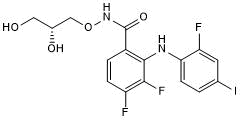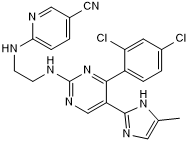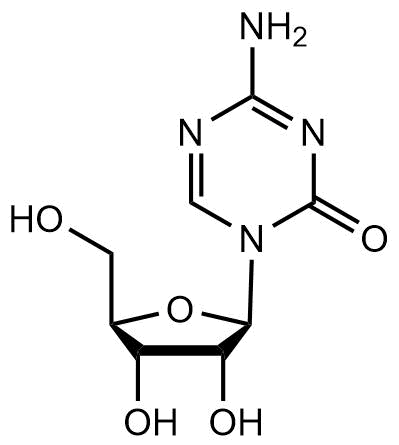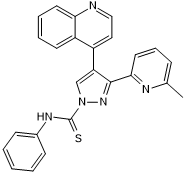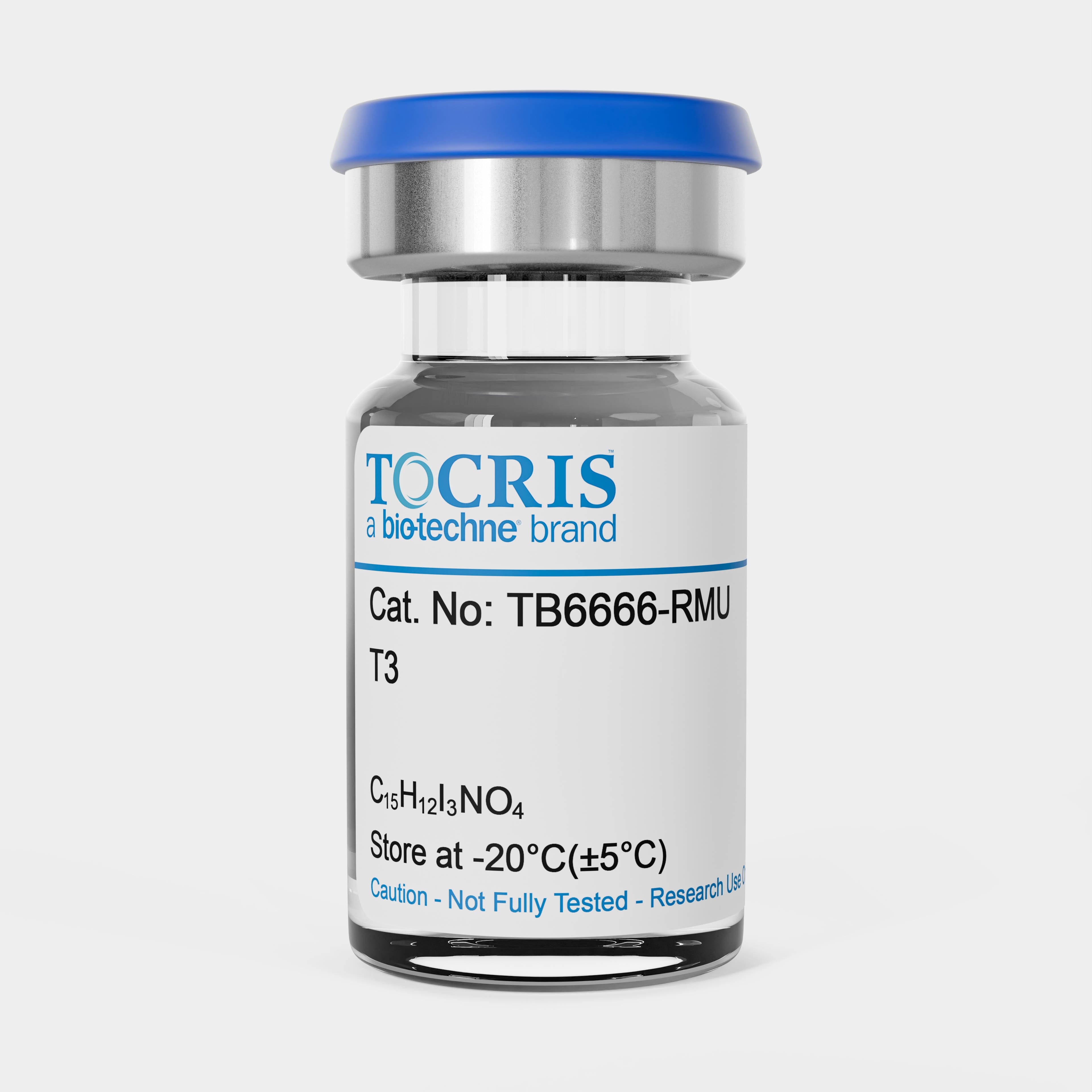Compounds for Induced Pluripotent Stem Cells: Small Molecules and Peptides
Induced pluripotent stem (iPS) cells were first generated from fibroblasts by exogenously expressing four transcription factors: KLF4, c-Myc, Oct-4, and SOX2. However, somatic cell reprogramming can be inefficient, and the use of viral vectors can complicate their therapeutic potential. Thus, bioactive small molecules are important tools for optimizing iPS cell generation and research. Compounds such as Thiazovivin can be added to culture media to enhance the efficiency of iPS cell generation. Chromatin modifying small molecules, such as those that target histone deacetylases (HDACs) or methyltransferases, can also aid in somatic cell reprogramming by opening chromatin and promoting the transcription of pluripotency genes. In fact, following epigenetic changes induced by Valproic Acid, a HDAC inhibitor, iPS cells can be generated from somatic cells with the introduction of only Oct-4 and SOX2. Recent reports indicate that small molecules can also replace the function of particular transcription factors. For example, Kenpaullone, a Cyclin Dependent Kinase and GSK-3 beta inhibitor, can replace KLF4. Tocris provides a complete range of small molecules to optimize somatic cell reprogramming and reduce the need for viral-mediated transduction of transcription factors.
42 results for "Compounds for Induced Pluripotent Stem Cells Small Molecules and Peptides" in Products
42 results for "Compounds for Induced Pluripotent Stem Cells Small Molecules and Peptides" in Products
Compounds for Induced Pluripotent Stem Cells: Small Molecules and Peptides
Induced pluripotent stem (iPS) cells were first generated from fibroblasts by exogenously expressing four transcription factors: KLF4, c-Myc, Oct-4, and SOX2. However, somatic cell reprogramming can be inefficient, and the use of viral vectors can complicate their therapeutic potential. Thus, bioactive small molecules are important tools for optimizing iPS cell generation and research. Compounds such as Thiazovivin can be added to culture media to enhance the efficiency of iPS cell generation. Chromatin modifying small molecules, such as those that target histone deacetylases (HDACs) or methyltransferases, can also aid in somatic cell reprogramming by opening chromatin and promoting the transcription of pluripotency genes. In fact, following epigenetic changes induced by Valproic Acid, a HDAC inhibitor, iPS cells can be generated from somatic cells with the introduction of only Oct-4 and SOX2. Recent reports indicate that small molecules can also replace the function of particular transcription factors. For example, Kenpaullone, a Cyclin Dependent Kinase and GSK-3 beta inhibitor, can replace KLF4. Tocris provides a complete range of small molecules to optimize somatic cell reprogramming and reduce the need for viral-mediated transduction of transcription factors.
Potent, selective inhibitor of TGF-βRI, ALK4 and ALK7
| Chemical Name: | 4-[4-(1,3-benzodioxol-5-yl)-5-(2-pyridinyl)-1H-imidazol-2-yl]benzamide |
| Purity: | ≥99% (HPLC) |
SB 431542 synthesized to cGMP guidelines
| Chemical Name: | 4-[4-(1,3-benzodioxol-5-yl)-5-(2-pyridinyl)-1H-imidazol-2-yl]benzamide |
| Purity: | ≥99% |
Highly selective GSK-3 inhibitor; acts as Wnt activator
| Alternate Names: | CHIR99021,CT99021 |
| Chemical Name: | 6-[[2-[[4-(2,4-Dichlorophenyl)-5-(5-methyl-1H-imidazol-2-yl)-2-pyrimidinyl]amino]ethyl]amino]-3-pyridinecarbonitrile |
| Purity: | ≥98% |
CHIR 99021 synthesized to cGMP guidelines
| Chemical Name: | 6-[[2-[[4-(2,4-Dichlorophenyl)-5-(5-methyl-1H-imidazol-2-yl)-2-pyrimidinyl]amino]ethyl]amino]-3-pyridinecarbonitrile |
| Purity: | ≥99% |
Selective inhibitor of TGF-βRI, ALK4 and ALK7
| Chemical Name: | 3-(6-Methyl-2-pyridinyl)-N-phenyl-4-(4-quinolinyl)-1H-pyrazole-1-carbothioamide |
| Purity: | ≥98% (HPLC) |
EZH2 histone methyltransferase inhibitor
| Alternate Names: | DZNep,NSC 617989,HY-12186 |
| Chemical Name: | (1S,2R,5R)-5-(4-Amino-1H-imidazo[4,5-c]pyridin-1-yl)-3-(hydroxymethyl)-3-cyclopentene-1,2-diol hydrochloride |
| Purity: | ≥98% (HPLC) |
PORCN inhibitor; inhibits Wnt processing and secretion
| Chemical Name: | N-(6-Methyl-2-benzothiazolyl)-2-[(3,4,6,7-tetrahydro-4-oxo-3-phenylthieno[3,2-d]pyrimidin-2-yl)thio]-acetamide |
| Purity: | ≥98% (HPLC) |
Potent tankyrase inhibitor
| Alternate Names: | XAV939 Wnt Signaling Inhibitor |
| Chemical Name: | 3,5,7,8-Tetrahydro-2-[4-(trifluoromethyl)phenyl]-4H-thiopyrano[4,3-d]pyrimidin-4-one |
| Purity: | ≥98% (HPLC) |
Potent inhibitor of MEK1/2
| Alternate Names: | PD325901 |
| Chemical Name: | N-[(2R)-2,3-Dihydroxypropoxy]-3,4-difluoro-2-[(2-fluoro-4-iodophenyl)amino]-benzamide |
| Purity: | ≥99% (HPLC) |
Prototypical PI 3-kinase inhibitor; also inhibits other kinases
| Chemical Name: | 2-(4-Morpholinyl)-8-phenyl-4H-1-benzopyran-4-one hydrochloride |
| Purity: | ≥99% (HPLC) |
Wnt/β-catenin signaling inhibitor; axin stabilizer
| Chemical Name: | rel-4-[(3aR,4S,7R,7aS)-1,3,3a,4,7,7a-Hexahydro-1,3-dioxo-4,7-methano-2H-isoindol-2-yl]-N-8-quinolinylbenzamide |
| Purity: | ≥98% (HPLC) |
Potent and selective inhibitor of TGF-βRI
| Alternate Names: | E-616452,SJN 2511,ALK5 Inhibitor II |
| Chemical Name: | 2-(3-(6-Methylpyridine-2-yl)-1H-pyrazol-4-yl)-1,5-naphthyridine |
| Purity: | ≥99% (HPLC) |
Enhances the generation of iPSCs; increases reprogramming efficiency
| Alternate Names: | L-Ascorbate,Vitamin C |
| Chemical Name: | 3-Oxo-L-gulofuranolactone |
| Purity: | ≥99% (HPLC) |
Sterile-filtered 10 mM solution of CHIR 99021 pre-dissolved in DMSO
| Chemical Name: | 6-[[2-[[4-(2,4-Dichlorophenyl)-5-(5-methyl-1H-imidazol-2-yl)-2-pyrimidinyl]amino]ethyl]amino]-3-pyridinecarbonitrile |
| Purity: | ≥97% (HPLC) |
Histone deacetylase inhibitor
| Alternate Names: | VPA,Sodium Valproate |
| Chemical Name: | Sodium 2-propylpentanoate |
ROCK inhibitor; improves the efficiency of fibroblast reprogramming and induction of iPSCs
| Chemical Name: | N-Benzyl-[2-(pyrimidin-4-yl)amino]thiazole-4-carboxamide |
| Purity: | ≥98% (HPLC) |
Histone deacetylase inhibitor
| Chemical Name: | Butanoic acid sodium salt |
XAV 939 synthesized to cGMP guidelines
| Chemical Name: | 3,5,7,8-Tetrahydro-2-[4-(trifluoromethyl)phenyl]-4H-thiopyrano[4,3-d]pyrimidin-4-one |
| Purity: | ≥99% |
Retinoic acid analog; RAR agonist
| Alternate Names: | Ro 13-7410 |
| Chemical Name: | 4-[(E)-2-(5,6,7,8-Tetrahydro-5,5,8,8-tetramethyl-2-naphthalenyl)-1-propenyl]benzoic acid |
| Purity: | ≥98% (HPLC) |
Inhibitor of Hedgehog (Hh) signaling
| Chemical Name: | (2'R,3S,3'R,3'aS,6'S,6aS,6bS,7'aR,11aS,11bR)-1,2,3,3'a,4,4',5',6,6',6a,6b,7,7',7'a,8,11,11a,11b-Octadecahydro-3',6',10,11b-tetramethylspiro[9H-benzo[a]fluorene-9,2'(3'H)-furo[3,2-b]pyridin]-3-ol |
| Purity: | ≥97% (HPLC) |
L-Ascorbic acid synthesized to Ancillary Material Grade
| Chemical Name: | 3-Oxo-L-gulofuranolactone |
| Purity: | ≥99% |
p53 inhibitor. Also aryl hydrocarbon receptor agonist
| Chemical Name: | 1-(4-Methylphenyl)-2-(4,5,6,7-tetrahydro-2-imino-3(2H)-benzothiazolyl)ethanone hydrobromide |
DNA methyltransferase inhibitor
| Chemical Name: | 4-Amino-1-β-D-ribofuranosyl-1,3,5-triazin-2(1H)-one |
| Purity: | ≥98% (HPLC) |
A 83-01 synthesized to Ancillary Material Grade
| Chemical Name: | 3-(6-Methyl-2-pyridinyl)-N-phenyl-4-(4-quinolinyl)-1H-pyrazole-1-carbothioamide |
| Purity: | ≥98% |
T3 synthesized to Ancillary Material Grade
| Chemical Name: | O-(4-Hydroxy-3-iodophenyl)-3,5-diiodo-L-tyrosine |
| Purity: | ≥98% |









